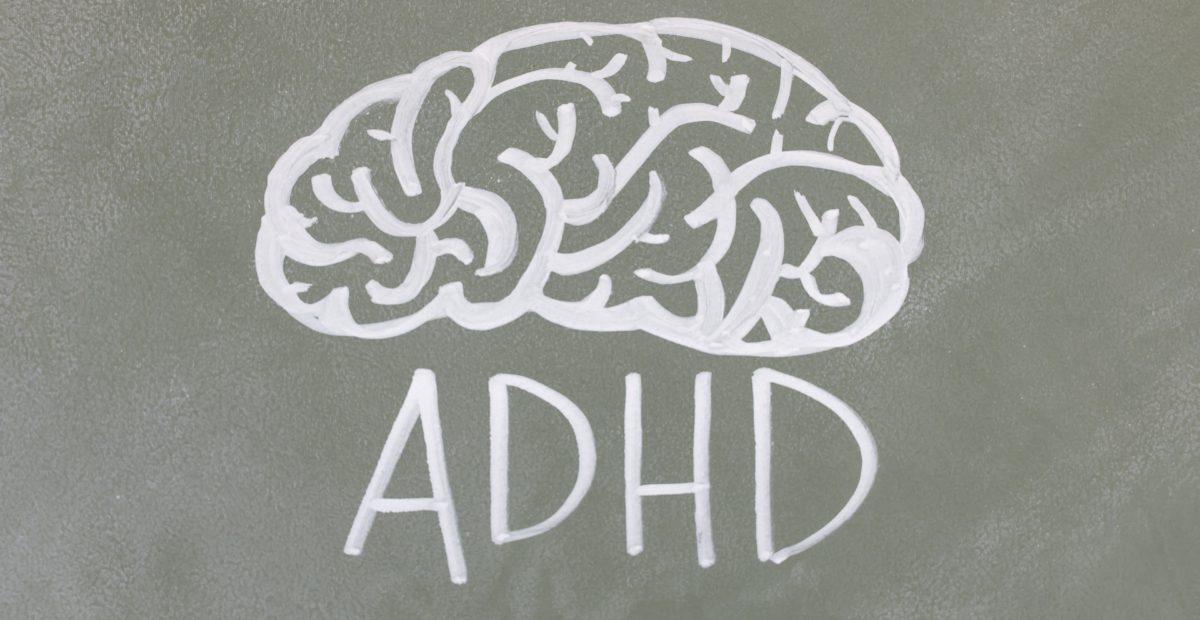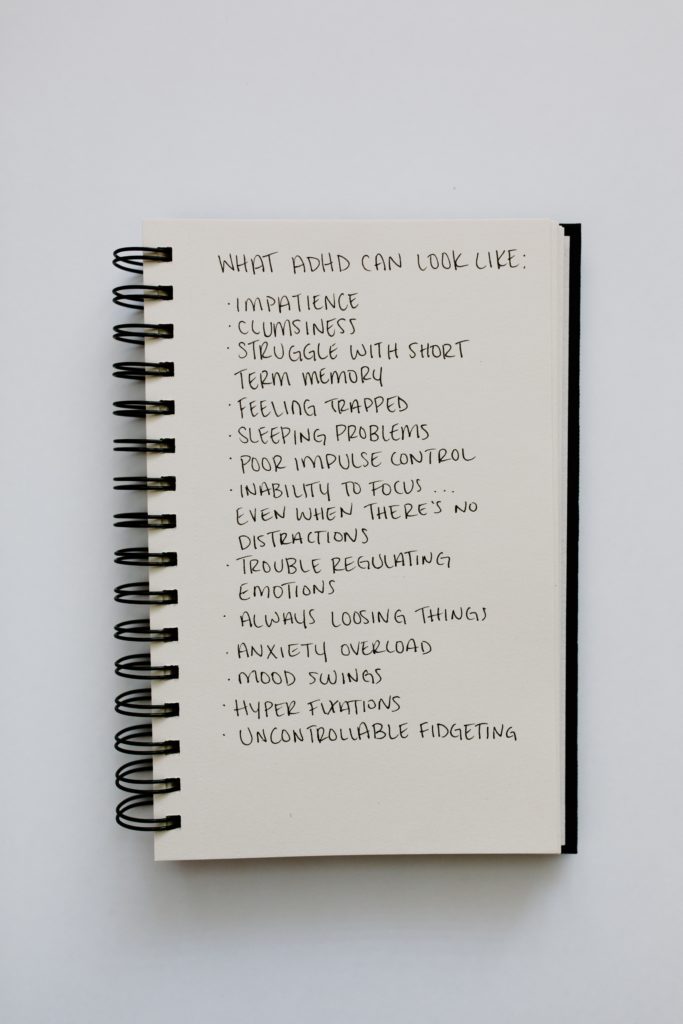How is ADHD Diagnosed and How Do You Get an ADHD Diagnosis?

Featured Image by Tara Winstead, Pexels.com
ADHD stands for Attention Deficit/Hyperactivity Disorder. ADHD affects the behaviour of an individual where they may appear restless, find it hard to concentrate at home, school or work, or they may be very impulsive in acting on these decisions. The symptoms of ADHD can be recognised in the early stages of life when you may notice a difference in the child’s behaviour at school. The symptoms fall under three categories: inattentiveness, hyperactivity, and impulsiveness. These symptoms include a short attention span, fidgeting a great amount and acting without thinking first. ADHD can be treated through medicine or therapy.
What is ADHD?
Attention Deficit Hyperactivity Disorder (ADHD) is a neurodevelopmental condition characterised by inattentiveness and hyperactivity.
There are three different variations of ADHD: predominantly inattentive presentation, predominantly hyperactive-impulsive presentation and combined presentation.
This neurodivergence can be diagnosed in children, teenagers and adults across all genders and backgrounds.
Where can you go to get an ADHD diagnosis?
If you suspect that you may have ADHD, it’s always best to start by speaking to your GP. After discussing which signs of ADHD you’re experiencing, your doctor can then refer you for a specialist ADHD assessment.
The formal ADHD assessment is usually carried out by a psychiatrist who specialises in neurodivergent conditions. If the psychiatrist agrees that you have ADHD, they will then be able to officially diagnose you.
How long does it take to receive an ADHD diagnosis?
You may need to join a waiting list before receiving an ADHD diagnosis. The amount of time you’ll have to wait will vary depending on the current demand, but your GP should be able to give you an indication.
What is the diagnostic criteria for ADHD?

Image by Tara Winstead, Pexels.com
ADHD consists of three presentations which are the inattentive presentation, hyperactive-impulsive presentation or the combined presentation. These presentations indicate a person’s ability to focus or their attention span.
People with inattentive presentations are more likely to find it difficult to organise things, get easily distracted, forget to complete tasks, have no interest in completing certain tasks, struggling to focus or find it hard to follow directions.
However, individuals who have hyperactive-impulsive presentations may find it difficult to sit still, can’t stay in their seats, talk continuously, cannot wait their turn, obstruct conversations, do not wait for questions to be finished before answering, or drive carelessly.
If the individual has inattentiveness and hyperactivity, they are recognised as having a combined presentation of ADHD symptoms.
According to the DSM-5 criteria for ADHD, traits include a pattern of inattention, hyperactivity, or concentration which may indicate whether a person has ADHD.
There must be at least six or more symptoms of inattention for children up to the age of 16, and five or more for teenagers and adults aged 17 years or older. These symptoms would need to remain consistent for 6 months in order to reach a diagnosis.
Furthermore, some other criteria would need to be met such as a number of inattentive or hyperactive symptoms that they experienced before the age of 12, a number of symptoms they experienced in two or more settings such as home or school, a clear indication of symptoms interfering with their social, school or work life. The specialist will need to rule out whether the symptoms are a result of a different condition such as anxiety, depression, or mood disorders.
How is ADHD usually diagnosed?

Image by Ivan Samkov, Pexels.com
Generally, a child will receive an ADHD diagnosis if their symptoms are shown early in life, at least before the age of 12. Their ADHD traits must also be recognised as creating consistent difficulties at home or at school. However, there is no specific test for ADHD.
To form a diagnosis, doctors and specialists will usually perform a medical exam to rule out other possible causes for the symptoms, gather information on other medical issues, personal, family, medical history or school records. Interviews or questionnaires may be used to gather information from family members, teachers, caregivers, babysitters and coaches. The specialist will follow the ADHD criteria listed in the DSM-5.
The guidelines in the DSM-5 will support the assessor to establish whether an adult has ADHD or not. They will use this to figure out if the symptoms were there at childhood. When making a diagnosis for an adult, there must be 5 or more symptoms that the adult has experienced however it can change over time as it may be presented differently.
What tests are used to diagnose ADHD?
- Full physical examination – vision and hearing tests.
- Neuropsychiatric EEG Based Assessment Aid (NEBA) – A scan that measures the brainwaves.
- Complete medical history check – to look for other medical conditions that may be affecting the individual.
Children
- Interviews with the child and their parents, teachers, and any other adult who is close to your child.
- Behaviour rating scales – to rate or monitor the child’s behaviour.
Adults
- Behaviour in their childhood – how they behaved when they were young at school or at home.
- Interviews with the adult’s life partner, parents or close friends.
- Neurological testing: a number of tests used to examine the nervous system and see if it is impaired.
- Psychological testing is used to measure the person’s ability such as cognitive function like memory and spatial recognition.
Diagnosing ADHD in children
Before seeking an ADHD diagnosis for a child, if they are in school, it may be best to speak to their teacher first. Their teacher can give you an overview of how your child is behaving in the school environment and you can discuss your concerns with them. If you and your child’s teacher also see a consistent pattern of inattentiveness and/or hyperactivity inside and outside of school, the next step is to visit your child’s GP. While your GP cannot make a diagnosis for ADHD, they will talk through your child’s symptoms and any problems they may be facing. The GP can then refer your child for specialist assessment.
There are a number of things the GP will discuss with you about your child, such as your child’s symptoms and behaviour, when these symptoms developed, in which situations these symptoms occur most, whether their symptoms are affecting your child’s day to day life if something significant has happened within the family if other members of the family have ADHD or other health conditions.
If the GP feels that the child has ADHD, they may ask the parent to wait a little longer, this may be around 10 weeks to see if the child’s symptoms improve or get worse. They may also suggest starting an ADHD focused programme to give you tips on how to help yourself and your child who may have ADHD.
Diagnosing ADHD in adults
It can be a little more difficult to receive an ADHD diagnosis as an adult. If an adult is seeking a diagnosis, during the assessment the specialist will want to find out about present symptoms. However, according to the diagnostic guidelines, symptoms must be present from a young age. To diagnose an adult, psychiatrists will carry out examinations to check the possibility of it being another cause, they can also carry out mental health assessments to look for any medical issues that could be a possibility or use ADHD rating scales to collect information around symptoms and assess those symptoms.
Why not try out our ADHD quiz? (Please note this is not an official diagnosis)



